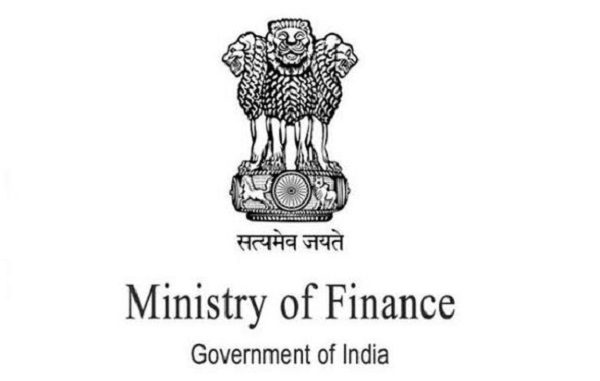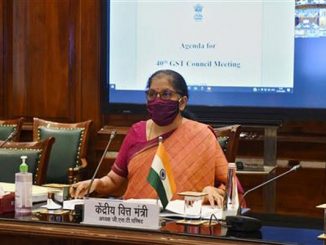
Oct 07: Below is the text of the Keynote Address of Shri N.K. Singh, Chairman of the 15th Finance Commission’s address to the Commonwealth Finance Minister’s Meeting 2020:
“Let me, at the outset, express my gratitude to the Secretary-General of the Commonwealth, Patricia Scotland, for the privilege and honour afforded to me to deliver this keynote address to the Commonwealth Finance Ministers Meeting. I am also grateful to Professor Ruth Kattumuri, Senior Director Economic, Youth and Sustainable Development, who has invested new life in addressing these key challenges.
We are currently meeting under extraordinary circumstances where the global pandemic has inflicted immeasurable fiscal strains on the economy of all Commonwealth countries. I have no doubt that the sagacious remarks of honourable ThapeloMatsheka, Minister of Finance and Economic Development of Botswana, have articulated the broad framework and the challenges which confront the Commonwealth economies. Within the Commonwealth family, we must recognize its immense diversity on all key macroeconomic parameters. These relate to the size of the economy, the per capita income, the diversification of the economy and their inter-sectoral contribution to the GDP as well as their unique governance structure. This is a classic case where as Sarah McBride said, “There is no one-size-fits-all narrative; everyone’s path winds in different ways.”
I must also compliment the discussion papers prepared by the Commonwealth Secretariat on the theme of our deliberations today. There is a wide diversity also, as pointed out in the discussion note, on issues relating to the approach of multilateral institutions including the International Monetary Fund. The attachment contained in that on the probabilities of debt default of various countries within the Commonwealth family is also sobering. These are extraordinary times in which the advice of Balibek in his recent paper on ‘Managing Fiscal Risks Under Fiscal Stress’, a special series on COVID-19, does bring out graphically the need to understand the implications of changes in macro and financial conditions on the budget. Equally, we need to understand the implications of quantifying major contingent liabilities as we look back historically on the evolution of fiscal policies.
The fiscal architecture of any economy in the 21st century inevitably rests on three pillars: the pillar of fiscal rules, the pillar of financial management process and the pillar of fiscal institutions. In a certain sense, we will soon enter the third phase of fiscal rules and policies. The first phase covered these rules by stipulating norms relating to fiscal deficit targets consistent with macroeconomic stability. The original fiscal responsibilities and management legislations in most countries concentrated on rules pertaining to fiscal deficits. In the second phase, we recognized that fiscal management must be guided by principles of equity, efficiency and transparency. These rules must be applied to all levels of government including subnational levels and budgetary institutions as well as management practices. The question of raising the quality and efficiency of public spending remains a continuing challenge. Equally, the availability of credible data across levels of government remains elusive. The classic questions of raising the quality and efficiency of public spending is a continuing challenge. The strain on public finances during theCOVID-19 crisis especially highlights the importance of reprioritizing expenditure. How quickly can expenditures be reprioritized for financing health, skill inculcation and infrastructure, accentuates the importance of ensuring public financial management policies. These policies encompass processes and systems.
The second-generation fiscal rules currently underway have increasingly recognised the need to adopt more than one fiscal rule to balance competing options and enhance credibility. The need to create a fiscal anchor, the challenge of having multiple rules and the inconsistencies in seeking to monitor, verify and communicate remain problematic. Fiscal data on all contingent liabilities incurred by the sovereign, subnational and parastatals and a recourse to off-budget borrowing remains problematic. The weakest link in the fiscal architecture has been the absence of credible institutions. Enforcement mechanisms have been characteristically weak and halting. While many countries have set up Fiscal Councils, often they are not independent, lacks expertise and without much legislative support. Enforcing fiscal decisions through a legislative process remain a long haul. The third critical pillar of 21st century fiscal architecture must be to reinvigorate all credible institutions.
This distracts from the credibility of debt numbers. The second-generation fiscal rules typically rely on escape clauses or equivalent mechanism in using structural deficiencies to create flexibility. Countries very often adopt automatic correction mechanisms, which also need to specify, in advance, how deviations from the general rule must be handled. This inevitably implies the need for medium term fiscal policies adopted with multiple fiscal indicators. Moreover, having public debt as a principal macroeconomic anchor has been widely accepted. But several questions remain unanswered. What levels of public debt would be acceptable based on conditions which are country-specific and have been worked out in accordance with international benchmarking? The Reinhart-Rogoff suggestion of external debt becoming a problem at around 60% of GDP and growth turning negative at 90% GDP must be interpreted in a broader context. The differentiated nature of various economies will need country-specific models, keeping in view the need to avoid what is typically called the ‘debt cliff’. Countries with significantly higher per capita income have significantly higher debt levels without compromising their long-term macroeconomic stability.
In the aforesaid context, I have five broad observations to make.
First and foremost, that in the context of the pandemic, we need to focus not on fiscal rectitude but on fiscal forbearance. Fiscal norms designed for normal times are not appropriate in distressed times like these. Let me also add that the last major global pandemic was 102 years ago, if one were to go by the example of the Spanish Flu. This was long before the United Nations and other sister agencies of the Bretton Woods family, namely the World Bank and IMF were established. The multilateral institutions are thus confronting the challenges of a pandemic of this nature for the first time. There are no past precedents and we need to address the present complexities. The first challenge for these institutions is how to determine the norms of fiscal forbearance. Norms which are fair, appropriate and consistent. Norms which will address: the health emergency, building economic recovery, accepting the fiscal shock, addressing the nature of the fiscal shock and reforming the International Debt Architecture.
Second, given the uncertain nature of the pandemic, this is a continuing challenge for finance ministers. For instance, a classic question is: what should be the appropriate levels of fiscal stimulus? And in determining fiscal stimulus, should we occupy all the fiscal space fully now given the fact that we cannot predict the nature of the pandemic? Should fiscal room be left to be used somewhat later depending on when a vaccine can be accepted and more can be said about the evolution of this pandemic?
The third issue is connected with the balance between actions of the sovereign government and the activities of the central bankers. Seeking synchronization between the policies of the sovereign and the central bankers is critical to address the ongoing pandemic. This is true not only for non-banking financial sector like the cooperative sector but, equally, for private corporate entities. Private corporate entities which are seeking a restructuring of the debt process would need the advice and guidance of central bankers. There are no hard and fast rules to address these. Evolving norms on some of these issues will remain a continuing challenge.
Fourth, while it is necessary and perhaps easier to argue in favour of fiscal forbearance—and taking recourse to escape clauses or such flexibilities which these norms prescribe—it is equally important to get back on track as soon as the pandemic has begun to wane. The path to fiscal rectitude after fiscal forbearance must be central to these norms. It is easier to exit than to re-enter. Fiscal forbearance must be followed by fiscal rectitude. What is the point at which nations will determine that the pandemic has begun to wane and we need to reconfigure the contours of macroeconomic stability? The constitution of credible and independent fiscal institutions like the Fiscal Council and enforcements mechanisms for fiscal rule must be integral of these institutions.
Fifth, what kind of an international consensus could be evolved around the fiscal forbearance norms? What is the appropriate entity for doing so? As the background papers of the Commonwealth Secretariat has rightly observed, “While the Commonwealth is not the United Nations, in many ways, it does represent a microcosm of the world, encompassing diverse countries with similar history, languages, values and presents one of the best opportunities for brokering this agreement.” Clearly, apart from the deliberations in this Finance Ministers forum, in which I have had the privilege to speaktoday, earlier discussions have taken place and must inform the forthcoming deliberations of the G20. The current ongoing sessions of the United Nations General Assembly and the United Nations Economic and Social Council (ECOSOC) must also accord this priority. More importantly, in the Annual Meetings of the International Monetary Fund and World Bank taking place on 12 October this must occupy centre stage.
The weakest link in the fiscal architecture has been the absence of credible institutions. Enforcement mechanisms have been characteristically weak and halting. While many countries have set up Fiscal Councils, often they are not independent, lacks expertise and without much legislative support. Enforcing fiscal decisions through a legislative process remain a long haul. The third critical pillar of 21st century fiscal architecture must be to reinvigorate all credible institutions.
I think that the Commonwealth Finance Ministers would be doing a great service to themselves in case the international community revisits some of these norms which have been evolved in the absence of any global pandemic to work out what would be appropriate debt limits, and the tolerance threshold offiscal forbearance. This consensus is necessary not only for sovereign nations but, equally, for markets, private entities and rating agencies who greatly influence the nature of economic activities in an interdependent world. The broad question remains: what kind of fiscal forbearance would be necessary to sustain both livelihood and, equally, the recovery of the stressed economies following the unlocking of the lockdown events.
Let me end by thanking all of you and also for the opportunity to articulate on the overriding priority of fiscal forbearance. Pandemic COVID-19 is no ordinary pandemic. It would have permanently altered many contours of economic and social behaviours. The new normal will never be the old normal. It has been said, “you never change things by fighting the existing reality. To change something, build a new model that makes the existing model obsolete.” – R. Buckminster Fuller.”
Disclaimer: We donot claim that the images used as part of the news published are always owned by us. From time to time, we use images sourced as part of news or any related images or representations. Kindly take a look at our image usage policy on how we select the image that are used as part of the news.


